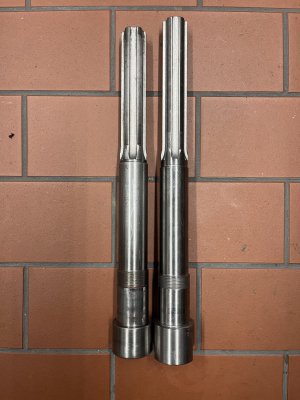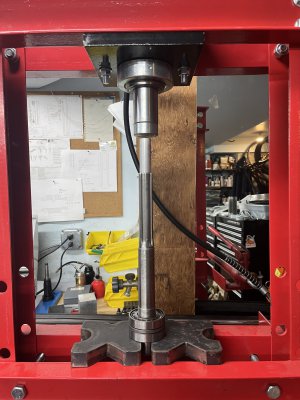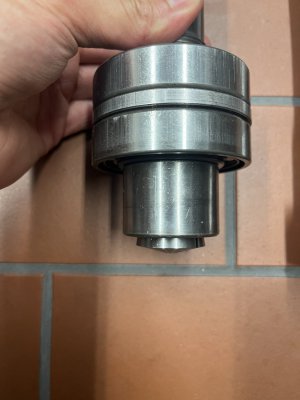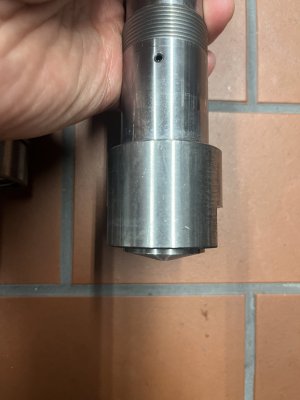- Joined
- Nov 12, 2017
- Messages
- 391
Won't get reliable measure with a caliper. Also unlikely undersize per se, more that is burnished from riding in quill housing, not all have hard chrome plating. That will affect bore AND quill diameter riding through opening, at variance to what never exits. The tolerance/ allowance between them is not 'tight' by definition, it's minimum clearance with remainder taken up by lubricant. Mill spindles are sized to hold sufficient bearing size, and a lot of surface area to the housing.
It's why milling is best best performed with retracted quill. It's why drill presses make crappy milling machines.
Spindle or quill, never ran into a knee mill needing heat. Since they haven't built-in cooling, those tolerances would not result in a sweet running machine.
I doubt 3 of a hundred people can insert a quill free hand, maintaining perfect axial alignment. Cup the lower end in a short, faced off, section of tube on piece of printer or wax paper right on the mill table. Use both axis to 'find' centerline and raise carefully with the knee, twisting paper if need be. Until spindle has entered housing, roughly equivalent to one diameter, there really is little assurance of correctness. ie, 10% in = 90% probability of misalignment, halfway in is 30 to 50% and so on. Entirely dependent on physical sizes involved. Some might freeze spindle.....and risk condensation in non soluble lubricant, Sticky as hell, no lubrication.
It is possible towards the end to have problem when lower bearing retainer enters; dirt in mating faces, retainer over tightened, set screw protruding or too tight, incorrect bearing fit to bore, among others.
It's why milling is best best performed with retracted quill. It's why drill presses make crappy milling machines.
Spindle or quill, never ran into a knee mill needing heat. Since they haven't built-in cooling, those tolerances would not result in a sweet running machine.
I doubt 3 of a hundred people can insert a quill free hand, maintaining perfect axial alignment. Cup the lower end in a short, faced off, section of tube on piece of printer or wax paper right on the mill table. Use both axis to 'find' centerline and raise carefully with the knee, twisting paper if need be. Until spindle has entered housing, roughly equivalent to one diameter, there really is little assurance of correctness. ie, 10% in = 90% probability of misalignment, halfway in is 30 to 50% and so on. Entirely dependent on physical sizes involved. Some might freeze spindle.....and risk condensation in non soluble lubricant, Sticky as hell, no lubrication.
It is possible towards the end to have problem when lower bearing retainer enters; dirt in mating faces, retainer over tightened, set screw protruding or too tight, incorrect bearing fit to bore, among others.







